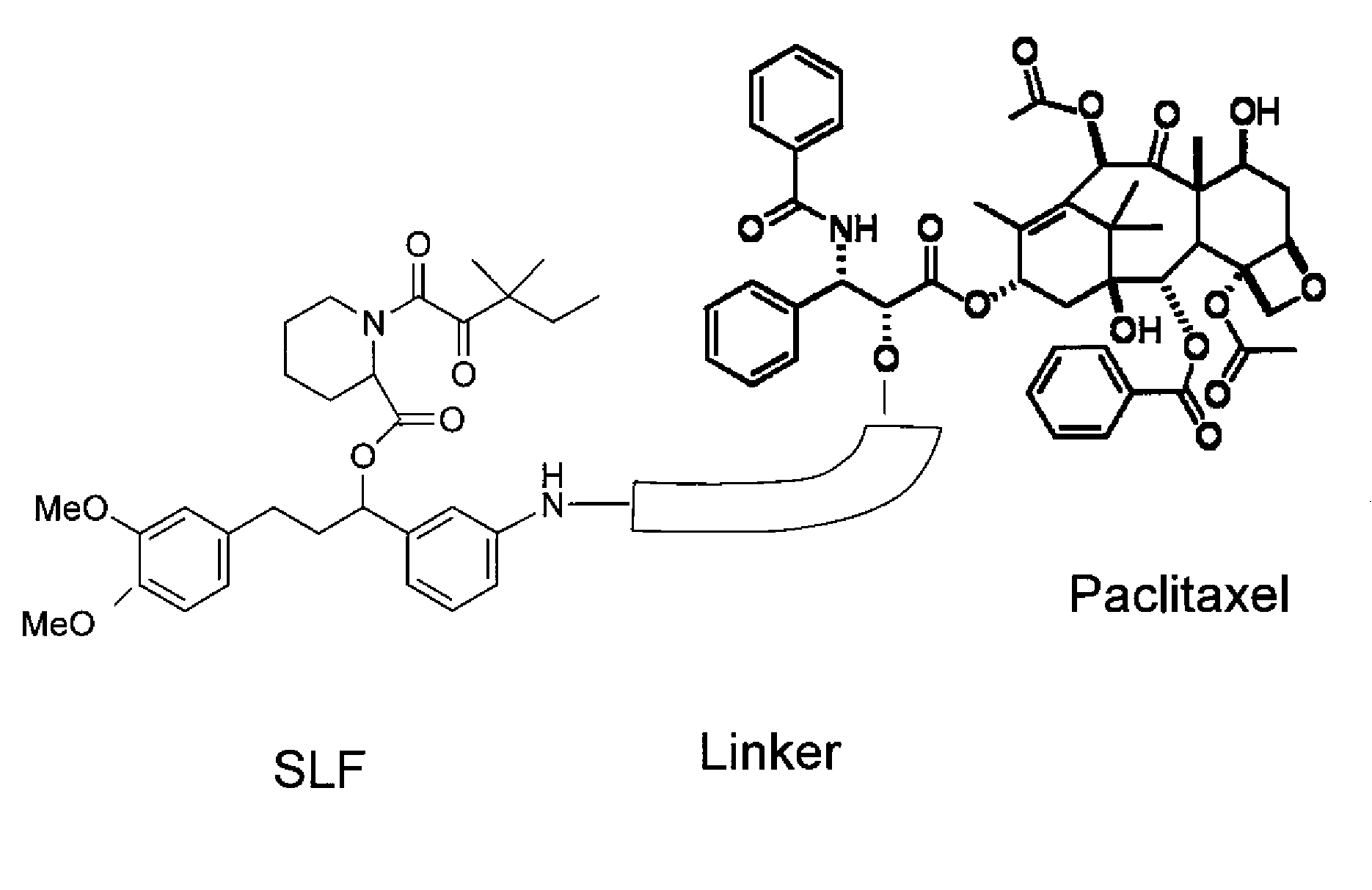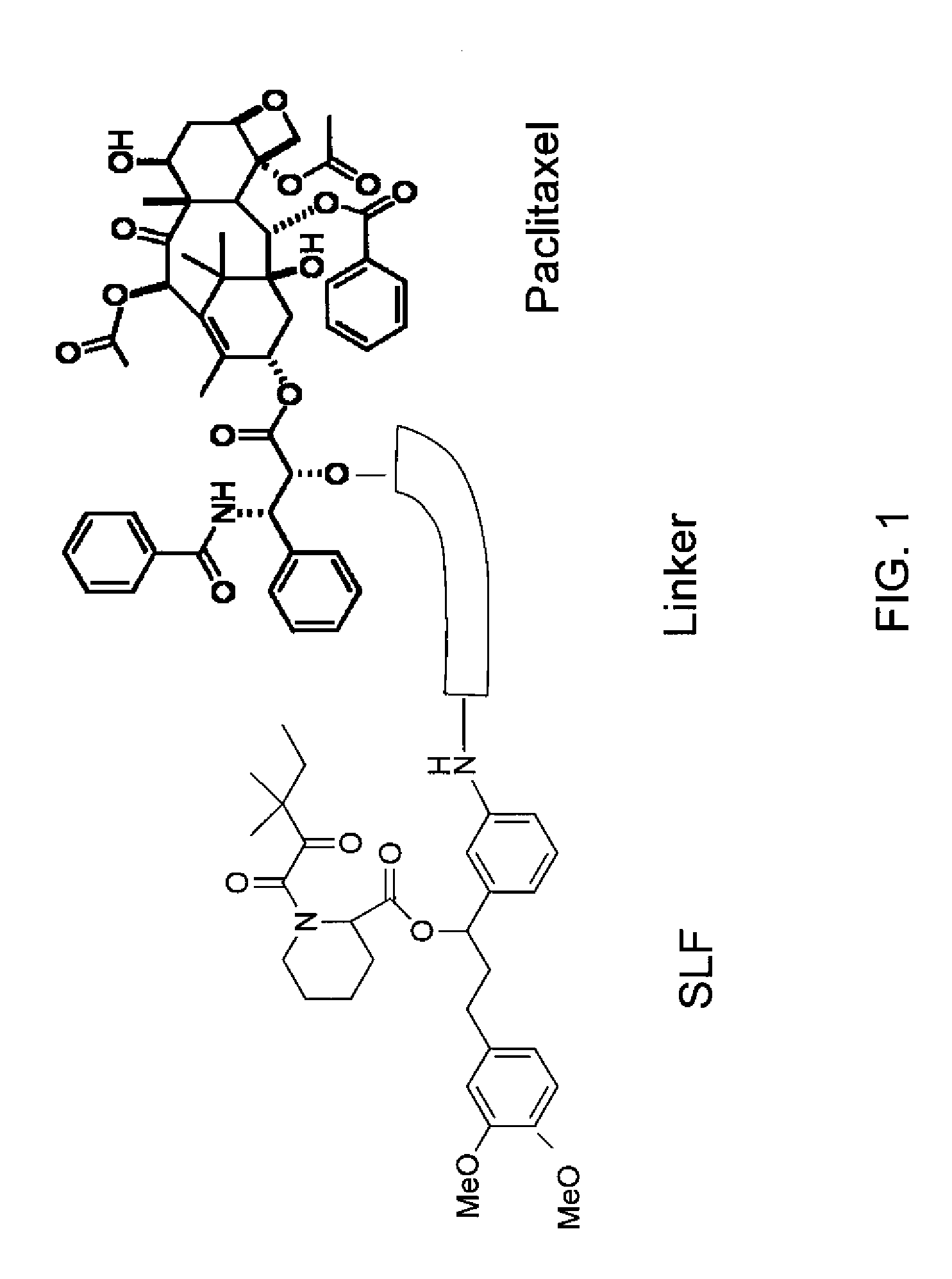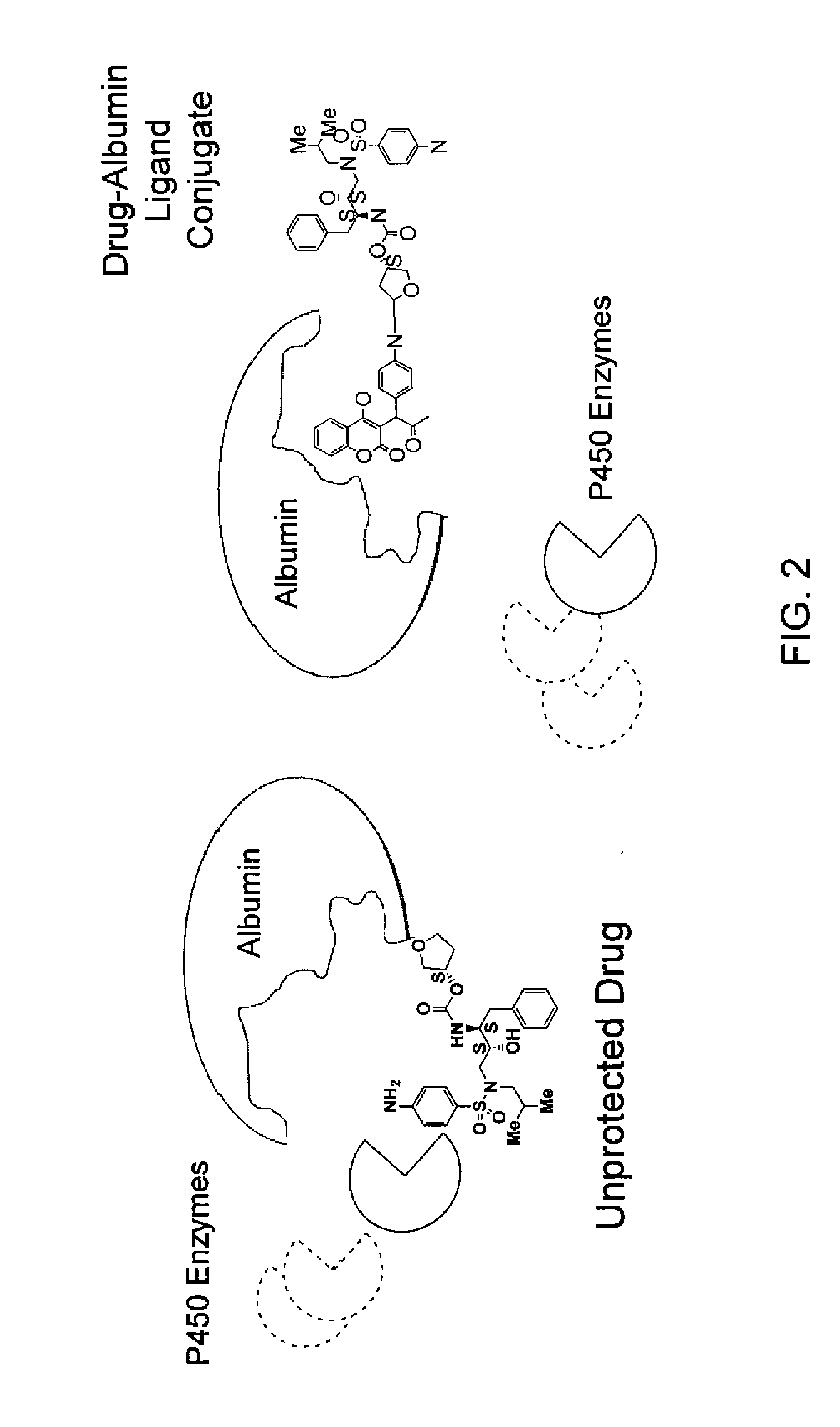Combinatorial improvement of bifunctional drug properties
a drug and bifunctional technology, applied in the field of pharmacology, can solve the problems of drug toxicity, poor tissue targeting, drug toxicity of dose formulation, etc., and achieve the effect of optimizing equilibrium binding constants and enhancing affinity
- Summary
- Abstract
- Description
- Claims
- Application Information
AI Technical Summary
Benefits of technology
Problems solved by technology
Method used
Image
Examples
example 1
Optimizing Linker Length and Kinetics
[0093]The test compound, a bifunctional, protease inhibitor-SLF conjugate, is made with the following linker unit chemistries: glycol, alkene, imine. The number of subunits is varied as follows: 1,3,5,7,9 subunits in length connecting inhibitor and SLF moieties. The synthetic yield is calculated. Next efficacy of the bifunctional drug target is measured by an in vitro cell infectivity assay and binding to the drug target is made via surface plasmon resonance on a Biacore. The koff rate constant is further analyzed by Biacore to determine if the off rate is in the regime of several seconds to minutes, In this manner. linker length is examined by kinetic analysis to provide a mechanistic basis for differences in drug residence time in cells and to optimize efficacy. Linker chemistry may also be used to optimize oral bioavailability and solubility.
example 2
Optimizing Off Rates and Adsorption from the Gut
[0094]A Caco-2 cell line is used as a model for adsorption from the gut, Compounds with good permeability are expected to have superior oral bioavailability. In this Caco-2 protocol, the flux of the test article from the apical to the basolateral side of Caco-2 cells is evaluated in order to predict the absorption of compounds from the lumen of the intestine. Since this is a HTS protocol, only a single concentration of the test article and a single incubation time will be used in order to accommodate a large number of test articles. A typical protocol is discussed below:
[0095]1. Dissolve each bifunctional article in an appropriate solvent (e.g., DMSO) to prepare a 100× stock solution (e.g., 5 mM). Dilute this stock solution in Apical Transport Buffer to prepare a 1× dosing solution (e.g., 50 μM). Many researchers choose a standard dosing concentration of 50 μM and N=1 to 3 replicate wells for experiments in which they will only be scre...
examples 3
Optimizing Extra and Intra-Cellular Distribution
[0101]The recruiter ligand choice is used to bias extra and intracellular distribution. The bias is dependent on the choice of drug target. Drugs such as insulin operate on extracellular receptors and there is no efficacy advantage to internalizing the protein to the intracellular space. However, many chemotherapeutics such as paclitaxel bind to an intracellular component such as tubulin, thus making an intracellular bias desirable. Nonetheless, overly biasing the distribution in the intracellular case will make it impossible for the drug to spread its effect over a large number of cells given the limited dose amount (typically 130 mg / kg in humans). Overbiasing the drug in the extracellular case will make it difficult to target the drug to specific locations if the therapeutic must cross cell membranes to achieve effective transport.
[0102]So, the tuning of the extracellular and intracellular distribution is important, and must be engin...
PUM
| Property | Measurement | Unit |
|---|---|---|
| Fraction | aaaaa | aaaaa |
| Fraction | aaaaa | aaaaa |
| Fraction | aaaaa | aaaaa |
Abstract
Description
Claims
Application Information
 Login to View More
Login to View More - R&D Engineer
- R&D Manager
- IP Professional
- Industry Leading Data Capabilities
- Powerful AI technology
- Patent DNA Extraction
Browse by: Latest US Patents, China's latest patents, Technical Efficacy Thesaurus, Application Domain, Technology Topic, Popular Technical Reports.
© 2024 PatSnap. All rights reserved.Legal|Privacy policy|Modern Slavery Act Transparency Statement|Sitemap|About US| Contact US: help@patsnap.com










